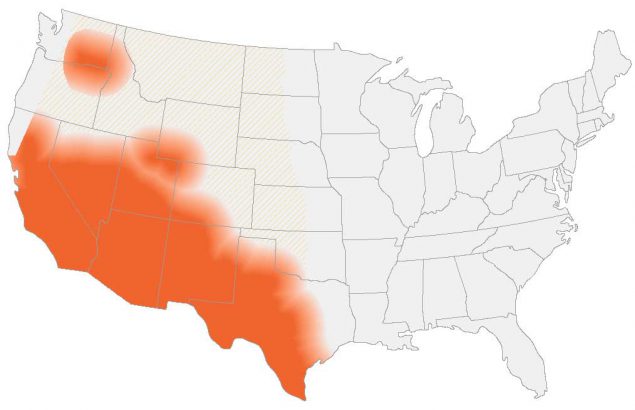Valley Fever is caused by the fungus Coccidioides spp. (C. immitis, C. posadasii)
Valley Fever derives its name from its discovery in the San Joaquin Valley of California, where it was also referred to as "San Joaquin Valley Fever" or "Desert Rheumatism." The medical name for Valley Fever is coccidioidomycosis (often shortened to "cocci").
Valley Fever is not a "contagious" disease; it is not passed from person to person.
Valley Fever is contracted only by the inhalation of the coccidioides fungal spores. Even if multiple animals or humans are affected in a household, each infection was acquired by inhaling spores from the soil. Coughing cannot spread it between animals or people. The spores change form in tissues of the body and are not contagious in tissue form.
Second infections are rare. Valley Fever symptoms generally occur within three weeks of exposure.
Many visitors from nonendemic areas develop Valley Fever after returning home from the Southwest, and their physicians may not be familiar with the disease.
Many domestic and native animals are susceptible to the disease.
Such as dogs, cats, horses, cattle, sheep, burros, coyotes, rodents, bats and snakes. Dogs are especially susceptible and often need long-term therapy with anti fungal medications.
Area of Distribution:
 https://www.cdc.gov/fungal/diseases/coccidioidomycosis/maps.html
https://www.cdc.gov/fungal/diseases/coccidioidomycosis/maps.html https://www.cdc.gov/fungal/diseases/coccidioidomycosis/maps.html
https://www.cdc.gov/fungal/diseases/coccidioidomycosis/maps.html
The fungus Coccidioides grows in soils in areas of low rainfall, high summer temperatures and moderate winter temperatures, such as the southwestern United States and northern Mexico, specifically:
-
San Joaquin and central valleys of California
-
Southern Arizona (especially in Phoenix and Tucson)
-
Southern Nevada, New Mexico and western Texas (especially El Paso)
-
East-central Utah and south-eastern Washington (recently found)
-
Sonora and Chihuahua, Mexico
-
Semiarid and arid soils of Central and South America
How a Valley Fever Infection Occurs:
- The fungal spores become airborne when the soil is disturbed by winds, construction, farming or other activities
- Infection occurs when a spore is inhaled
- Within the lung, the spore changes into a larger, multi-cellular structure called a spherule
- The spherule grows and bursts, releasing endospores which develop into more spherules



